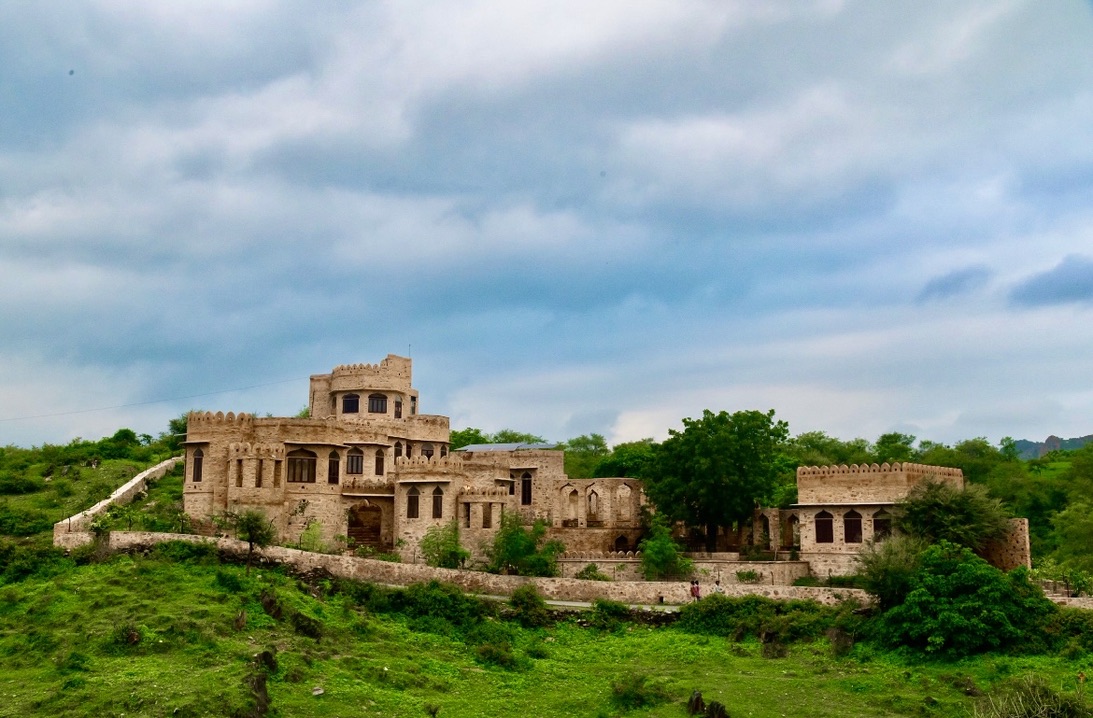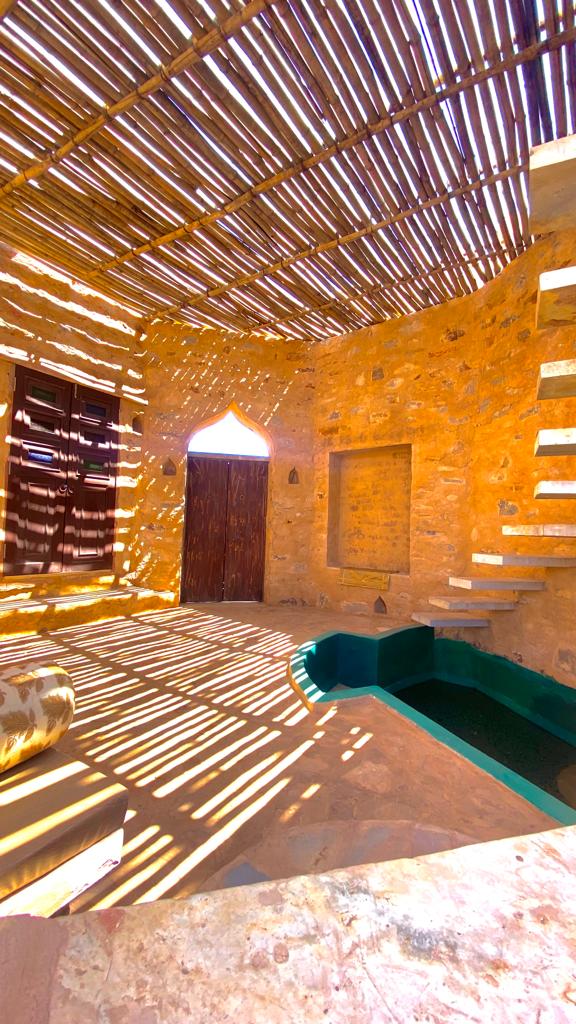Nature’s Abundant Resources for a Sustainable Future
Mother Nature has blessed us with abundant natural resources that can help positively impact the
world we live in. However, with the growing scarcity of fossil fuels, it is high time we shift our focus to
renewable energy and increase the use of sustainable resources in architecture and design.
At Manmatha, we are committed to utilizing natural materials to construct our properties. We aim to
reduce pollution, provide a sturdy and natural foundation, and lower our carbon footprint. We source
as many renewable and reusable materials as possible, from bamboo to recycled wood, to create
dwellings that are kind to the planet.
Our design philosophy is imbued with the wellness benefits of nature. We strive to offer every ecoconscious guest a sustainable vacation while they’re staying with us. Everything is intentionally chosen
to have the most negligible environmental impact, from the conflict-free bamboo floors to the toxinfree paint.
Join us on a journey towards a sustainable future for us and future generations. Mother Nature
provides everything we need – the will to use her resources responsibly.
The Benefits of Using Natural Resources
Sourcing materials locally is one of the best ways to reduce pollution and lower carbon emissions.
When materials are transported across long distances, fossil fuels are required to power ships, planes,
and trucks. Using local and natural building materials eliminates much of this transportation pollution.
Natural materials like stone, earth, bamboo, and wood provide incredibly sturdy foundations and
structures. They have stood the test of time and proven their resilience through centuries of
architectural history. Appropriately built, natural structures can last generations without frequent
repairs and replacements.
Finally, utilizing what nature provides locally is often the most budget-friendly option. Natural building
materials are abundant and do not need extensive processing, which drives costs. Constructing with
bamboo, for example, has been proven to reduce building costs by up to 30% compared to more
processed materials. The cost savings allow builders to allocate funds to other environmentally
friendly features.
Natural building materials represent a triple win – reducing pollution, providing sturdy structures, and
lowering costs. As architects and builders work to construct more sustainably, local natural materials
will continue to gain popularity for their environmental and economic benefits.
Bamboo as a Sustainable Building Material
Bamboo is one of the most sustainable and eco-friendly building materials available today. Bamboo is
a highly renewable resource as a fast-growing grass that can be harvested every 3-5 years without
replanting. Bamboo stalks proliferate, achieving their full height and thickness in a few short months.
In addition to its renewability, bamboo is valued for its incredible strength and durability as a building
material. Although lightweight, bamboo is as strong as steel and sturdier than many hardwoods.
Buildings constructed from bamboo can withstand considerable force and will last for decades.
Bamboo’s high tensile strength makes it ideal for beams, columns, trusses and framing.
Beyond its functional properties, bamboo offers excellent aesthetic appeal. Bamboo has a pleasing
visual texture and can be used to create contemporary, exotic or traditional structures. Bamboo has
various natural hues, from honey gold to deep caramel, which lends visual warmth and interest.
Bamboo can be left unadorned to showcase its raw beauty or finished, painted, and incorporated into
diverse architectural styles.
Its rapid growth, strength, durability and attractiveness make bamboo one of the best sustainable
resources for modern green building. As an alternative to timber and synthetic materials, bamboo
offers an eco-friendly, structurally sound and aesthetically pleasing solution.
The Wellness Benefits of Natural Design
Bringing nature indoors through plants, natural materials, and exposure to natural light has been
shown to reduce stress, enhance creativity and improve wellbeing. The concept of biophilic design
recognizes that, as human beings, we have an innate connection to nature, which promotes our health
and productivity.
Studies have indicated that spaces incorporating elements of nature such as greenery, water and
access to views and daylight can lower blood pressure and heart rates. It has been proven that
exposure to natural light helps regulate our circadian rhythms, improving sleep quality. Indoor plants
have also been found to improve indoor air quality by filtering pollutants.
Natural building materials like wood and stone have been linked to positive psychological effects by
evoking nature’s inherent sense of comfort and relaxation. Bamboo furnishings add warmth and
texture while also being eco-friendly and sustainable.
At Manmatha, biophilic principles guide architectural elements such as the open-air bamboo suites,
local building materials and decor that brings nature’s beauty indoors. These design decisions
create an oasis of tranquillity that enhances our guests’ well-being during their stay.
Manmatha’s Sustainable Architecture
At Manmatha, we incorporate sustainability into our architecture and design. This reduces the
environmental impact while providing guests a refreshing, nature-inspired experience.
Bamboo Construction
One of the leading sustainable building materials we utilize is bamboo. Bamboo is fast-growing,
renewable, and highly durable. It has a high strength-to-weight ratio, providing resilient structures
and beautiful aesthetic qualities. We strategically incorporate bamboo into our property’s floors,
walls, furniture, and more. Using bamboo helps us lower emissions while constructing and maintaining
excellent air quality for guests.
Solar Panels
In addition to bamboo, Manmatha takes advantage of solar energy. We have an array of highefficiency photovoltaic panels that convert sunlight into electricity. This powers our facilities during
the day, reducing energy costs and dependence on fossil fuels. Excess solar energy is stored in
batteries to help power needs at night. Our solar panels are integral to making Manmatha energy selfsufficient and carbon-neutral.
Rainwater Harvesting
Manmatha also collects rainwater throughout the property. Our landscapes and architecture allow us
to catch and store rainwater, which can be used for our gardens and certain facilities. This provides a
natural and sustainable water source, lowering our environmental footprint through conservation.
Our rainwater harvesting systems are designed to be low-maintenance, effective and non-intrusive to
the guest experience.
Manmatha recognizes the urgency of embracing green solutions in a world of finite resources and
environmental strain. Their commitment to sustainable practices benefits the planet and enhances
their guests’ health, comfort and experience. Travelers seeking an eco-friendly hotel or resort would
do well to consider Manmatha for their next stay.
The growing interest in sustainable tourism represents an encouraging shift in consumer values and
priorities. With Manmatha leading the way, the hospitality sector can adopt regenerative models that
work harmoniously with nature. As more businesses follow suit, they pave the path for a more
balanced co-existence between human civilization and the natural ecosystems that sustain us.


